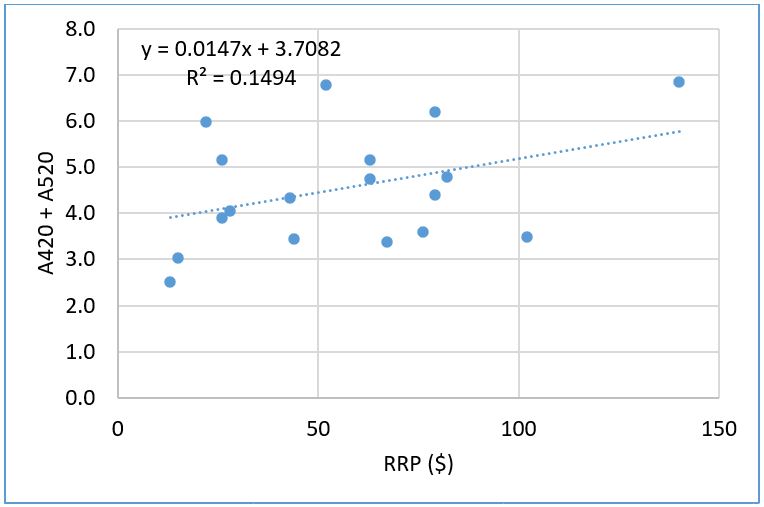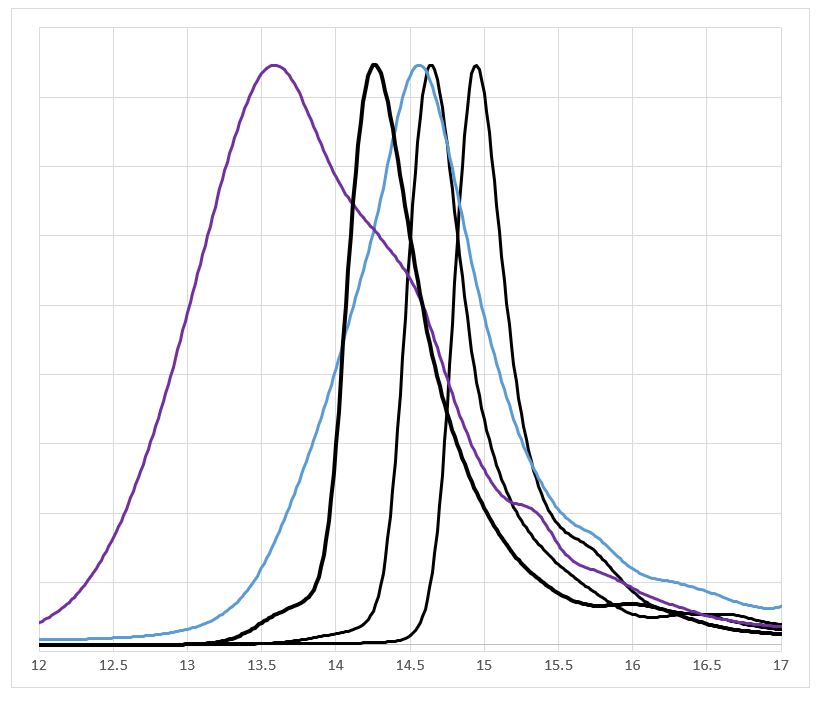Pinot Noir grape and wine phenolic profiling
Leandro Dias Araujo and Paul Andrew Kilmartin
School of Chemical Sciences, University of Auckland
The group of chemical compounds named phenolics play an important role in determining the colour and mouth-feel of red wines. These compounds have an important role in the sensory properties of wines, directly affecting wine colour density and hue, texture, astringency, bitterness, and modifying the aroma perception. They are extracted from grapes tissues during winemaking and form a very complex group with many different forms and attributes
Grape phenolics include the major classes of molecules ultimately responsible for wine colour (anthocyanins) and astringency (tannins), along with indirect effects on aroma and taste through oxidation processes. There are reasonably good links and correlations between the quantities of phenolics present in grapes and the levels in the final wines. Pinot noir is a variety with a somewhat simpler phenolic spectrum compared to many other red varieties and is known to feature high levels of certain seed derived phenolics, e.g. catechin monomers, and lower levels of total anthocyanins leading to less intensely coloured wines.
Various methods have been used over the years for the characterization of phenolic compounds in various plants. These range from simpler spectrophotometric methods to more complex and demanding techniques such as Nuclear Magnetic Resonance (NMR). Reversed-phase high-performance liquid chromatography (HPLC), usually in tandem with a diode array detector or a mass spectrometer, has been used extensively in the research of grape and wine phenolics. The various methods published focus on the assessment of the monomeric fraction of phenolics, as the polymeric tannins (compounds formed by the union of multiple similar phenolics) are difficult to analyse using this technique.
As useful as the HPLC approach is to look at the content of and changes in phenolics in grapes and wines, it is recognised that less than 50% of the phenolics present are of a monomeric (single compound) or dimeric size (two similar compounds combined into one molecule), particularly the phenolics responsible for astringency. Further chromatographic procedures, including phloroglucinolysis (acid catalysis of tannins in the presence of excessive phloroglucinol) and Gel Permeation Chromatography (GPC), have been developed overseas for the characterization of the polymeric tannins providing information on polymer size distribution and composition.
Spectrophotometric (UV-Vis) methods are generally much cheaper than the more advanced techniques and are easily implemented within a winery laboratory. However, they are very limited in comparison to the level of characterization obtained using rapid scanning instruments such as FTIR spectroscopy, or newer NMR systems capable of quantifying dozens of parameters, applicable to the grape variety involved and wine origin.
All the data generated by the combination of these methods can provide a much more complete characterization of grape and wine phenolics, aiding the understanding of factors involved in wine quality development.
The objective of our work is to implement in our laboratory a number of these methods, enabling the full characterization of grape and wine phenolic compounds. With these in place, we will contribute to the other research aims within the Pinot noir programme by offering a set of tools that will permit the understanding of the effect of factors in study on the wine phenolics and, consequently, on the sensory profile of wines.
High-performance liquid chromatography (HPLC)
HPLC is a widely used method for the quantification of a number of monomeric phenolic compounds in grapes and wine. For instance, we have applied this method, along with colour analyses by spectrophotometry, to characterize 18 New Zealand Pinot noir wines of a large range of retail prices. We can then make various contrasts: retail price versus wine colour density (Figure 1); colour density versus anthocyanin content; and anthocyanin content versus the percentage of non-bleachable pigments, to name a few.

Figure 1. Correlation between Colour density and recommended retail price (in NZD) showing that more affordable wines can have a colour as dense as premium wines.
Gel permeation chromatography and phloroglucinolysis
Gel permeation chromatography (GPC), is a separations technique that is based on size exclusion. Larger molecules tend to not enter the porous surface of the column packaging being excluded and leaving the column more quickly than smaller molecules that will go through every pore of the column material. This separation enables the analyst to have a molecular mass distribution (Figure 2) of the tannins in the wine. However, this technique does not give any information on the unitary composition of the tannins.
For this purpose, a method called phloroglucinolysis is commonly used. Phloroglucinolysis involves breaking the tannin chains into their monomeric units, binding a stabilizing agent to the newly formed compounds (in this case, phloroglucinol is used, hence the method name), and analyzing each individual unit content. This method gives information on the mean degree of polymerization, but also about the composition of the tannin, including the proportion of epigallocatechin units (skin origin) and epicatechin gallate units (seed origin).

Figure 2. Mass distribution of samples and standards with increasing molecular mass obtained by GPC
Future work
Other methods will be added to the current portfolio to have a complete set of analytical tools able to give answers to most needs for phenolic analysis within the wider Pinot noir programme. New challenges can always appear for which new methods have to be created or adapted, requiring new approaches and collaborations with expert researchers.
We will be working closely with other groups inside the Pinot Noir programme, in particular with the sensory panel studies focusing on in-mouth properties of Pinot noir wines. This is an important phase of the programme to determine which methods are most relevant to characterize the in-mouth sensory attributes of wines.
This article first appeared in the August/September 2019 issue of New Zealand Winegrower magazine

















